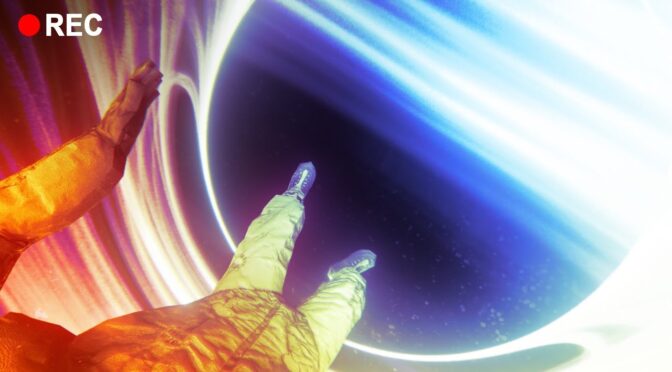Based on the video “What would we see if we fell into a Black Hole?” by ScienceClic English, this article sheds light on the phenomena associated with black holes. The video provides a comprehensive look at the optical effects, gravitational forces, and time distortions one would experience when approaching and eventually falling into a black hole.
Contents
- The Initial Approach
- Doppler Effects and Light Aberration
- Crossing the Horizon
- The Spaghettification
- Debunking Misconceptions and Unanswered Questions
- The video
The Initial Approach
As you venture closer to a supermassive black hole, like Sagittarius A* at the center of the Milky Way, you’ll encounter a thick disk of plasma orbiting it at near-light speeds. This disk emits intense radiation across various wavelengths, including light, ultraviolet, X-rays, and gamma rays. Assuming you’re equipped with a highly resistant spacesuit to filter out harmful radiation, you’d still need a visor to reduce the brightness of the disk (which, interestingly, appears predominantly blue due to its high energy).
Doppler Effects and Light Aberration
As you continue your descent, you’ll notice peculiarities in the light emitted by the disk and the background stars. The Doppler effect comes into play, making one side of the disk appear brighter than the other. Additionally, the strong gravitational pull of the black hole acts like a lens, warping the light and making the back of the disk appear as a ring around the horizon. The phenomenon of light aberration also becomes evident, making the black hole appear as if it’s moving away from you initially, only to grow larger in your field of view as you accelerate towards it.
Crossing the Horizon
Contrary to popular belief, crossing the event horizon of a black hole is not a dramatic event. You would still be able to see the light of distant stars and even your own body. The horizon doesn’t encompass your entire field of view; it only takes up about 15% due to the phenomenon of light aberration. However, once you cross this point, any signals you try to send out will never reach their destination (a rather unsettling thought).
The Spaghettification
As you near the center of the black hole, you’ll experience an incredibly powerful force that stretches and eventually dislocates your body. This phenomenon, known as spaghettification, occurs because the gravitational pull at your feet is significantly stronger than at your head. Within a fraction of a second, your journey would come to a catastrophic end as you reach the center of the black hole.
Debunking Misconceptions and Unanswered Questions
The video also debunks some common misconceptions about black holes. For instance, the disk around a black hole is not orange but blue. Also, you wouldn’t witness the entire history of the universe unfold before your eyes as you fall into a black hole. While current theories provide a good idea of what one would experience, they still fall short of explaining the extreme conditions near the center of a black hole. Scientists suspect that singularities, points where space-time curvature becomes infinite, may not actually exist, but this remains an area of active research.

